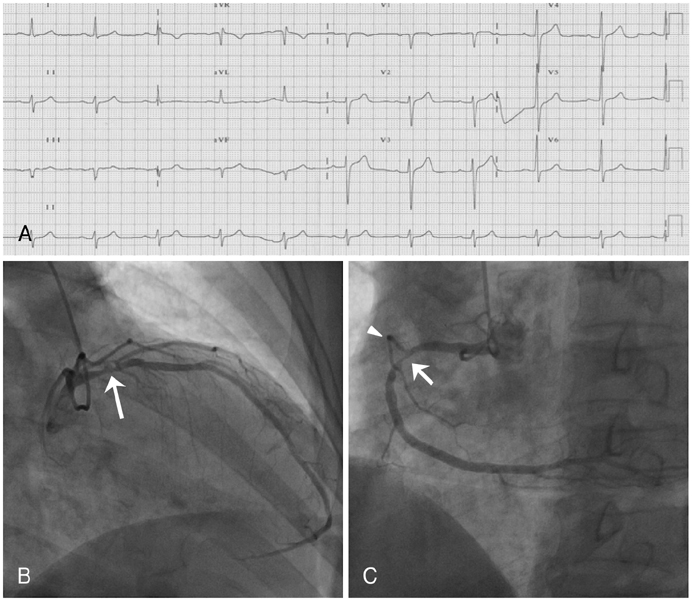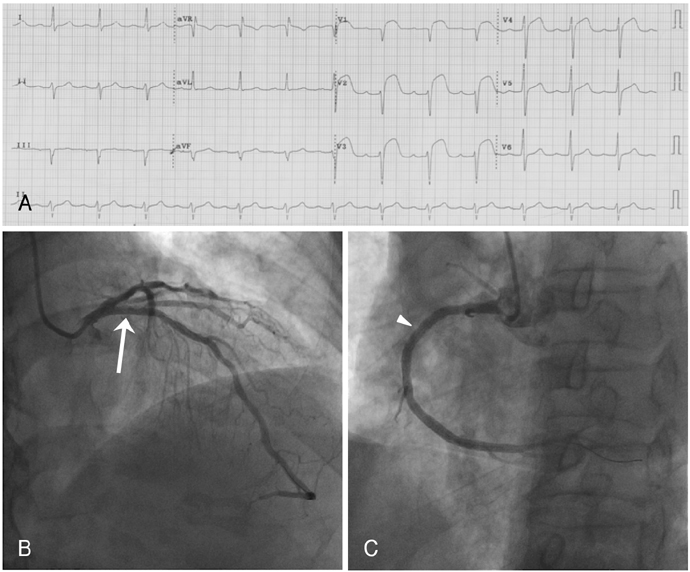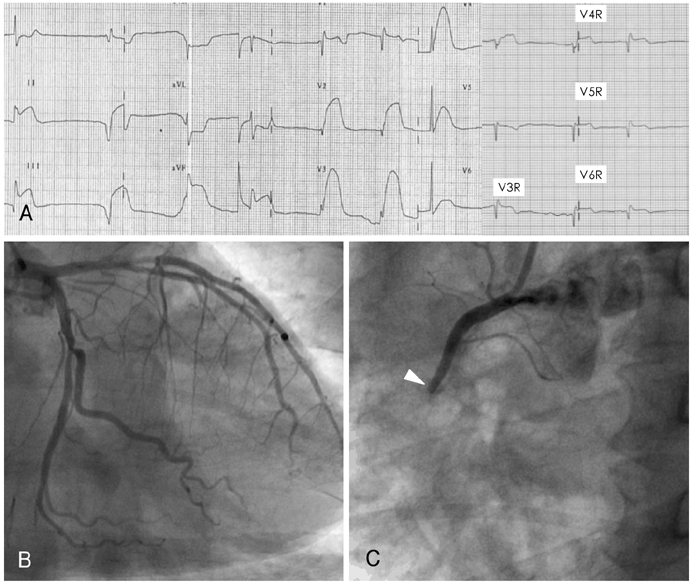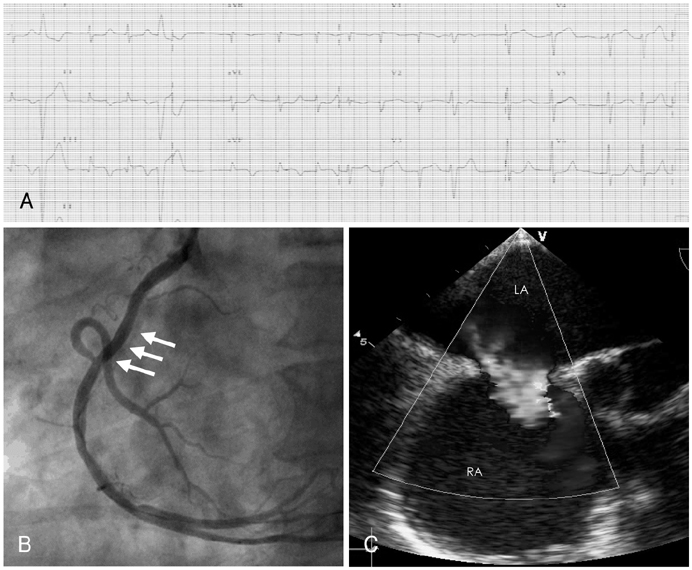Korean Circ J.
2008 Sep;38(9):495-499. 10.4070/kcj.2008.38.9.495.
Precordial ST-Segment Elevation in Acute Right Ventricular Myocardial Infarction
- Affiliations
-
- 1Division of Cardiology, Department of Internal Medicine, Gangneung Asan Hospital, Gangneung, Korea. bovio@naver.com
- KMID: 1776351
- DOI: http://doi.org/10.4070/kcj.2008.38.9.495
Abstract
- It is rare to observe ST-segment elevations in the precordial leads that are caused by an occlusion of the right coronary artery and/or its branches. We report here on two cases of acute occlusion of the right coronary artery or its branches that caused acute right ventricular myocardial infarction with ST-segment elevations in the anterior precordial leads. These cases should remind us that the presence of diffuse ST-segment elevations in the precordial leads could be due to acute occlusion of the right coronary artery.
Figure
Reference
-
1. Porter A, Herz I, Strasberg B. Isolated right ventricular infarction presenting as anterior wall myocardial infarction on electrocardiography. Clin Cardiol. 1997. 20:971–973.2. Saw J, Amin H, Kiess M. Right ventricular ischemia mimicking acute anterior myocardial infarction. Can J Cardiol. 1999. 15:1143–1146.3. Khan ZU, Chou TC. Right ventricular infarction mimicking acute anteroseptal left ventricular infarction. Am Heart J. 1996. 132:1089–1093.4. Lew AS, Maddhai J, Shah PK, et al. Factors that determine the direction and magnitude of precordial ST-segment deviations during inferior wall acute myocardial infarction. Am J Cardiol. 1985. 55:883–888.5. Geft I, Shah P, Rodriguez L, et al. ST elevations in leads V1 to V5 may be caused by right coronary artery occlusion and acute right ventricular infarction. Am J Cardiol. 1984. 53:991–996.6. Eskola MJ, Nikus KC, Niemela KO, Sclarovsky S. How to use ECG for decision support in the catheterization laboratory: cases with inferior ST elevation myocardial infarction. J Electrocardiol. 2004. 37:257–266.7. Eskola MJ, Kosonen P, Sclarovsky S, Vikman S, Nikus KC. The ECG pattern of isolated right ventricular infarction during percutaneous coronary intervention. Ann Noninvasive Electrocardiol. 2007. 12:83–87.8. van der Bolt CL, Vermeersch PH, Plokker HW. Isolated acute occlusion of a large right ventricular branch of the right coronary artery following coronary balloon angioplasty: the only true 'model' to study ECG changes in acute, isolated right ventricular infarction. Eur J Heart. 1996. 17:247–250.9. Kim MS, Han JK, Lee SE, et al. Cases of right ventricular myocardial infarction in patients with an absent or hypoplastic right coronary artery. Korean Cir J. 2007. 37:84–86.10. Chia BL, Yip JW, Tan HC, Lim YT. Usefulness of ST elevation II/III ratio and ST deviation in lead I for identifying the culprit artery in inferior wall acute myocardial infarction. Am J Cardiol. 2000. 86:341–343.
- Full Text Links
- Actions
-
Cited
- CITED
-
- Close
- Share
- Similar articles
-
- Acute Myocardial Infarction by Right Coronary Artery Occlusion Presenting as Precordial ST Elevation on Electrocardiography
- ST segment
- The Prognostic Significance of Maximal Precordial ST-Segment Depression in Patients with Acute Inferior Myocardial Infarction
- The Significance of the Precordial ST: segment Depression in Acute (V1- V3) Inferior Myocardial Infarction
- Clinical Significance of Precordial ST Segment Depression in Acute Inferior Myocardial Infarction





